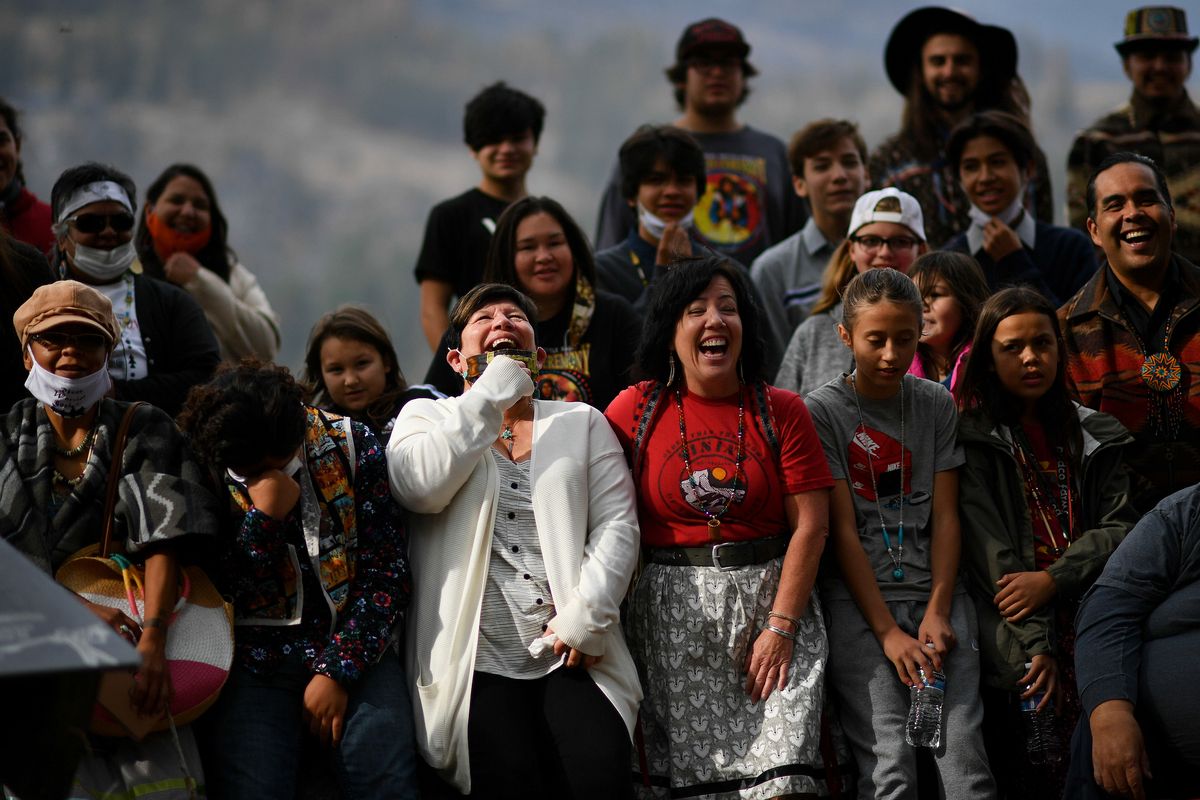Colville Tribes member wins pivotal case as Canadian Supreme Court rules Sinixt, once declared ‘extinct,’ have hunting rights on ancestral land

Canada’s Supreme Court ruled Friday that the Sinixt people, part of the 12 Confederated Tribes of the Colville Reservation, have constitutionally protected hunting rights on their ancestral land in current-day British Columbia.
The case began in 2010 when Rick Desautel, a Sinixt descendant and member of what is now known as the Lakes Tribe, killed an elk in a ceremonial hunt on traditional Sinixt land near Vallican, B.C. While the Canadian government had recognized the Sinixt in the early 1900s, calling them the Arrow Lakes Band, the government declared them extinct when the last known member of that band died in 1956.
Desautel and his lawyer argued the Sinixt people are very much alive, though European colonization pushed some of them south of their homeland to the Colville Reservation in Washington.
The court’s decision brought “jubilation” and “a gigantic sigh of relief,” Desautel told The Spokesman-Review.
“Through all the different appeals we’ve been through, and then getting to the Supreme Court,” he said, “the anticipation on my part has been very great.”
The Canadian Constitution protects the rights of Indigenous people to hunt for ceremonial purposes on their traditional land, and on Friday the court upheld lower court decisions acquitting Desautel of violating B.C. law by killing the elk. The 7-2 decision also means other Indigenous peoples in the United States can claim the same rights across the border if they can prove their ancestors lived in what is now Canada.
Rodney Cawston, chairman of the Colville Tribal Council, said the ruling is important not only for the Sinixt, but for numerous other Indigenous peoples separated from their ancestral lands since the U.S.-Canada boundary was drawn.
“My heart was just soaring,” Cawston said. “This is a huge decision for the Colville Tribes, as well as many other trans-boundary tribes. … It’s huge for all our future generations, who will be able to go back and forth across the border and enjoy the homelands of our people.”
Writing for the majority, Justice Malcolm Rowe said Section 35 of the Canadian Constitution should be interpreted such that “the expression ‘aboriginal peoples of Canada’ means the modern‑day successors of Aboriginal societies that occupied Canadian territory at the time of European contact, and this may include Aboriginal groups that are now outside Canada.”
The two dissenting justices, Suzanne Côté and Michael Moldaver, argued Desautel had not clearly established continuity with the pre-contact group’s practices. Côté also said Indigenous groups outside Canada’s borders should not be considered “aboriginal peoples of Canada,” while Moldaver agreed with the majority on that point.
Desautel’s lawyer, Mark Underhill, said the judgment has major implications for Indigenous people throughout Canada, not just along the border.
“The most important part of the decision, beyond the impact on the Sinixt,” Underhill said, “is the court’s very strong statements that rights in Canada flow from the prior occupation of aboriginal peoples for thousands of years in Canada, and that forced displacement – which is not just the story of the Sinixt, but is the story of many aboriginal groups throughout North America – is not going to displace those rights.”
In its judgment, the court also urged negotiations to determine the status of Indigenous groups, rather than relying on the courts.
“These things are not ideally done through test cases,” Underhill said. “They once again, as they’ve been doing for over 20 years, encouraged the parties and particularly the government to sit down and negotiate. … The hope is a lot of these issues can be resolved through good-faith discussions, as opposed to court cases.”
The hunt that led to Friday’s ruling was no accident, Desautel said, and was decades in the making.
It began at least as early as 1989, when Desautel was among a group of Colville tribal members who crossed the border to protest a plan to build a highway through land near Vallican where Sinixt people are buried. While their blockade ultimately failed to stop the road project, it helped organize an effort to be recognized by the Canadian government.
The tribal council came up with a plan: Desautel, who worked at the time for the Colville Tribes’ Fish and Wildlife Department, would cross the border and hunt game, knowingly violating B.C. law.
Joe Peone, the director of the Fish and Wildlife Department, researched Canadian law and presented the council with a step-by-step approach to prompt a court case to challenge the 1956 declaration that the Sinixt were extinct. It took several citations, Desautel said, before the government took him to court for the 2010 hunt.
Cawston said Friday’s decision was neither the beginning nor the end of the Sinixt people’s fight for recognition. Testimony from as far back as the 1920s, he said, shows Sinixt leaders never relinquished their rights.
“With the background of our ancestors encouraging us and fighting for those rights even as far back as when they were dispossessed,” Cawston said, “it really set us on a path. Going forward, we want to really begin working with the ministries in British Columbia on being recognized as a First Nation in Canada.”
Establishing relations with the Canadian government, Cawston said, would help Sinixt people protect their original homelands and natural resources. He also hopes to bring together Sinixt descendants who are enrolled in other First Nations in Canada.
“It gives us much better footing in Canada to protect our cultural resources, our archaeological resources, our grave sites,” he said. “So there’s going to be a lot of work ahead of us.”